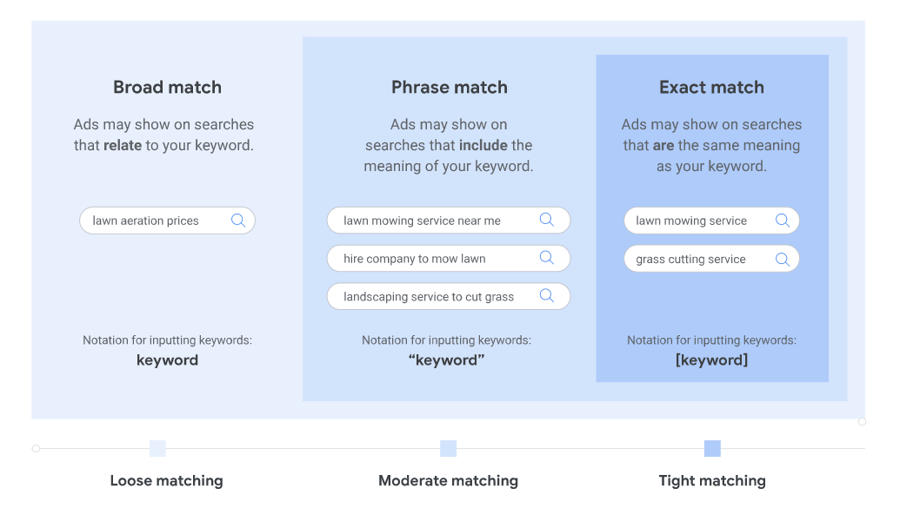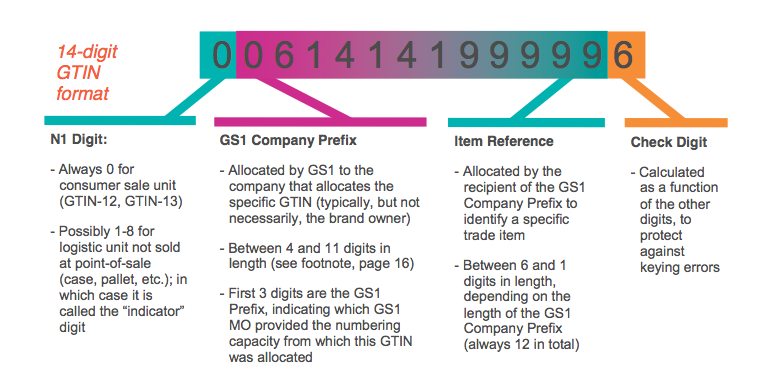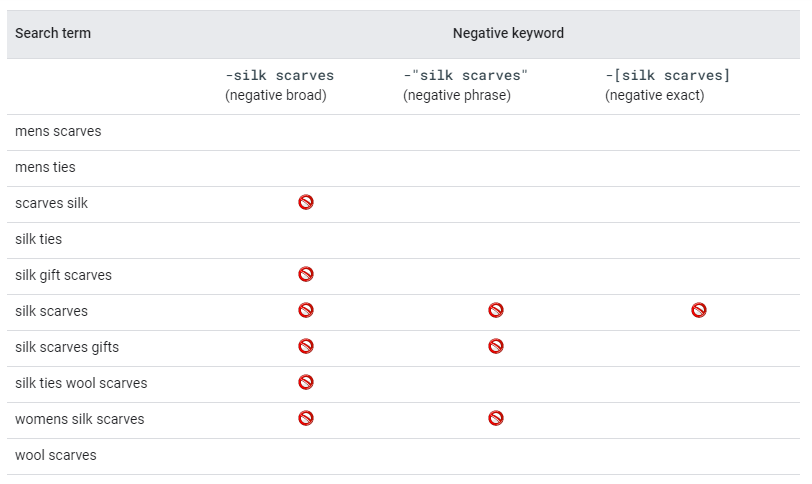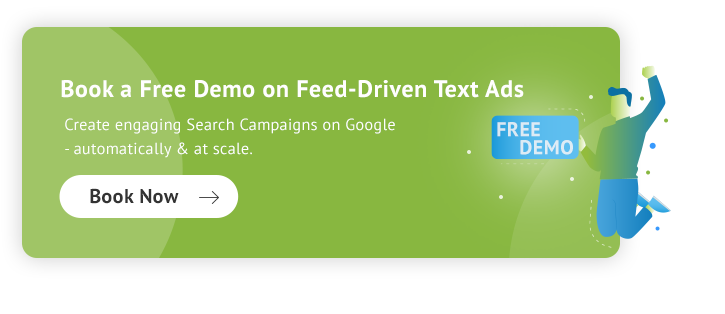Whereas for B2C advertisers, websites often have an instant sales cycle with a high e-commerce purchase rate, B2B businesses tend to have a longer lead time, with purchases taking weeks, months, or even years, and customer relationships lasting just as long.
An approach that takes into consideration these longer-term and more convoluted elements is needed. Therefore, well-optimized Google Search campaign can be fundamental for standing out from the competition in the search.
If you are wondering how to make the most of your Google Ads campaign, take a look at these 11 tactics tried and tested by professionals:
What is Google Ads optimization?
1. Take advantage of long-tail keywords
2. Try to use GTINs as keywords
3. Add audiences for your search campaign
4. Add a lead form extension & call extension
7. CTR is the most important metric? Have clear KPIs, & clear goals
8. Make the most of negative keywords
10. Target for location, device adjustments, age & gender
What is Google Ads optimization?
Google Ads optimization refers to the process of improving the performance of advertising campaigns on the Google Ads platform. This involves using various techniques and strategies to maximize the return on investment (ROI) of ad spend.
Optimization can involve identifying and targeting the right keywords, creating compelling ad copy and creatives, automating repetitive tasks and continuously monitoring and analyzing campaign performance.
By implementing these optimization strategies, B2B advertisers can increase the visibility of their brand, attract more qualified leads, and ultimately drive more sales and revenue.
It's important to keep in mind that Google Ads optimization is an ongoing process. Trying to fix everything at once is usually not recommended as it can be difficult to determine which changes had a positive or negative impact. The objective of optimization is to ensure that the campaign is performing optimally and meeting all of your objectives. This process can be time-consuming, but it's crucial to guarantee that your Google Ads campaigns are generating the maximum possible revenue.
How to Optimize Your Google Ads Search Campaigns
If you're a B2B advertiser looking to improve the performance of your Google Ads search campaigns, there are many optimization strategies that you can implement. In this article, we'll be discussing 11 essential Google search ads optimization tips that can help you achieve better results.
From conducting thorough keyword research to refining ad copy and creatives, these tips cover a range of optimization techniques that can improve your ad targeting and increase click-through rates.
1. Take Advantage of Long Tail Keywords
Why should you care about the long tail keywords when you think about optimizing your Google Ads? Basically, because the B2B consumers using Google Search have advanced expertise in their field, and therefore a great deal of knowledge about the products and services they are looking for.
This is reflected in their search history: they know exactly what to type into Google.
So here, the keyword choice you make as a B2B advertiser depends on which stage you are at:
1. Are you just building the campaigns from scratch? - Here we recommend adding as many relevant keywords as you can possibly think of, and adding them in exact match.
This ensures you cover a wide range of products and services, in order to test the market and find out which areas of your business are successful online. Equally however, because you have used exact match, it keeps the cost-per-click and advertising spend as low as possible.

2. Has your campaign run for a while in the exact match? - When you’ve collected your initial campaign data, after say a 14-30 day trial period, you can start adding keywords that are a bit broader in match type, for example, add some of the same keywords in phrase.
This means you are increasing spend, but in a highly selective and managed way: only add the keywords into phrase match which have initially shown some success. Then you will start to catch more search terms than before, as remember there are many ways people search for things on Google and we can't come up with all the variations ourselves; match types help us to do this.
That being said, in a B2B context, the user tends to search for very specific products or services, and the search query may contain more words than usual. Generally, these long-tail keywords don't have much volume, but they can be very valuable for your business; so it is important to show your ad when someone does the search - either by adding them in an exact match or making sure that broader match type variations can catch them.
|
Extra Tip: From a quality score and relevance perspective, you could potentially add these extra search terms into a separate ad group, enabling you to write more relevant ads. However, this strictly depends on the structure advertisers decide to make - as there are many tactics and structures.
|
If you're wondering about changing your ads campaign structure to tailor it better to your prospects, take a glance at 8 Most Popular Google Ads Campaign Structures [Pros & Cons]
2. Try To Use GTINs As Keywords
One useful strategy relates to adding in a range of keywords from the GTINs of your products. A GTIN number (Global Trade Item Number) is a number that is unique to a product. It can appear in several forms depending on the region manufactured, and product type. Due to its international recognition and specificness, the GTIN is ideal for identifying products.

B2B consumers are often highly skilled and knowledgeable about their industry area. Therefore, they know the specifics of products they may be looking for, even to the level of detail of their GTIN or MPN numbers etc.
We advise testing this strategy, but only for specific industries, such as IT, in which these terms are used more commonly in daily language, and also in circumstances in which there could be no double use of the GTIN number.
In eCommerce, you can easily use different attributes for your products, such as GTINs, to create keywords in your feed-driven Google search ads with DataFeedWatch.
Find out more about GTIN here.
3. Add Audiences For Your Search Campaign
We will start by saying that if you use smart bidding, Google automatically takes into account audiences, so you don't have to actually manually add them. However, if you want simply the visibility to know how certain audiences perform for reporting purposes, then it makes sense to add them.
Furthermore, you can add bid adjustments to audiences if you run campaigns on a manual or eCPC strategy. These can be added in Observation mode.
Another reason to add audiences is if you exclusively want to target solely these audiences. Usually, this is a common remarketing strategy. Perhaps someone visited your site, took a small action, and you want to remarket to this audience individually (for example, they may have added to the basket and then failed to purchase, or downloaded a whitepaper.)
You could try to customize the ad copy that fits this audience specifically. Your goal should be pushing the users further down the funnel, so they don’t make the mistake of repeating the same action they have already taken. Ask them to perhaps download an ebook on the landing page.
To do this, you can create audiences based on the funnel stages, and try to push the visitor deeper down until you generate a sale.
In theory, you can also target one of the audiences (or a couple) that are provided by Google, but in practice, you can't isolate them sufficiently enough.
For example, just because you decide to target only technology fans, doesn't guarantee that you won't get book readers. One user can be in multiple audiences, and on this premise, it is best for Google’s automation to take care of it for you.
4. Add a lead form extension & call extension
This move will help you to establish the credibility of your company! This move depends on the nature, and the policy of your business and the most efficient way for you to operate internally. Why? You may need to prepare for success!
If you start to receive many phone calls, you will have to hire a call center. For many companies, it actually doesn't make sense to have a phone number in the ads, for this specific reason. However, note that it does give a great opportunity to close a client once you get them on the call.
A Lead Form is also tricky. As many companies don't want to share their lead data with Google, especially in Europe, many of them have their own lead form on the site. In general, this idea would be better practice and means that collected information can remain within the privacy of the enterprise.
However, if you don't have your own lead form, this extension is great to collect client information and get back to them.
Remember, filling out as many fields as possible and using as many products as possible in your Google Ads account is always a good idea. This gives you an advantage when it comes to winning in auctions.
Finally, by having additional extensions such as call or lead forms, you are covering more real estate and physical space on the SERP, which of course leaves less room for your competitors and increases your CTR. However, a big point to remember is that most of the time you have to appear in the first position, in order to be able to leverage all extensions.
5. Automate Repetitive Tasks
The time invested upfront in automating repetitive tasks will save you a huge amount of time later. Don’t be shy of getting familiar with Automated Rules, and scripts are even better.
There are many things you can automate with rules and scripts:
- Adjusting CPC, bid adjust device, location, age, gender, day of the week, an hour of the day based on performance
- Pausing keywords and ads based on performance
- Excluding keywords based on performance
- Labeling and pausing ads when landing page hits error 404 - this one has saved me a lot of money when the site has been going down
- Changing bid strategy based on a threshold. For example, if you want to put your campaign on target CPA as soon as possible you can run a rule and once that is possible Google will do it for you
In general, advertisers should take a moment and assess where they spend most of the time, and try to figure out if that can be automated.
6. Exclude Display Search
Google defaults to allowing Search Ads to show on the Display Network as well. Unfortunately, a lot of beginners end up serving Search Ads on Display networks, serving low-quality impressions. It’s always preferable to exclude the Display Network where possible, as typically this generates much stronger results.
Now, this is a mistake that even seasoned PPC managers can make - so don’t worry if you’ve been guilty of this in the past!
If you run Google Display ads, we recommend excluding the ads from any apps. Usually, you generate extremely cheap impressions on apps, so automatically Google’s automation will push your ads to show on random gaming apps etc.
Honestly, 99% of the time they convert very poorly. Therefore, unless you are advertising a gaming app, we suggest excluding it from the Display network. Here, it is worthwhile keeping an eye on the placement lists and ensuring you exclude any websites or apps that perform poorly.
7. Have Clear KPIs, & Clear Goals
CTR has the biggest impact on Quality Score, which directly impacts the CPC influencing your ROI. But is CTR the most important metric?
One of the most important metrics from a Google Ads optimization perspective is the quality score, because quality score directly influences CPCs (the better the quality score the cheaper the CPC).
This means that advertisers really need to nail ad relevance, landing page experience, and CTR. So even if you have a relevant ad, people still might not click on it. So you need to think about the messaging as well - how to make people click.
|
Extra Tip: Avoid ‘fake’ or 'overly-keyword-heavy' messaging, otherwise, you will have a huge bounce rate and low conversion rate. In general, each company has one or two metrics that are considered the most important metrics; typically, these are profit or revenue. Unfortunately, this is what a lot of marketers often don’t look into enough, or ignore, and focus instead on marketing metrics that are unrelated to the overall goals of the business. |
To give an example, we have conducted a/b experiments, in order to test two different landing pages. The result was that on the first original landing page, users had a better landing page experience, but on the second site, better conversion rates were generated.
Now, if a marketer will just look solely at the Quality Score (landing page experience, in this case), they would be tempted to keep the original page, whereas actually having a better conversion rate makes much more sense for the business as a whole. This is because, as you generate more revenue, you simultaneously lower CPA, and increase ROI (view as you want).
Therefore, whilst it’s important to make improvements to your ads, you have to keep your main goal in mind - is it improving ROI or CPA?
Speaking of Quality Score - PPC managers in the industry are somewhat divided on the importance of quality scores.
Here are a couple of reasons why:
- It is inconsistent. Sometimes one keyword has a very high-quality score, whereas another one which is pretty much the same, has a much lower.
- Missing data. Often you can see that you don't have any score. For example, we’re currently doing a daily keyword quality score report in order to manually create a file where we track the development of quality score. For one campaign, we can't aggregate the development, because Google hasn’t shown us the quality score since the end of May!
- Some users have even seen brand keywords with poor quality score.
So, in short, optimize what makes sense for your business goals. Have all the ad types, ad extensions and focus on relevance of the keyword to the ad.
8.Use Negative Keyword Correctly
Negative Keywords are critical to making sure your ads are reaching the people who are most likely to click your ads.
Negative keywords are one of the most important aspects of any Google Ads optimization.
By utilizing them correctly, you can cut irrelevant spending and increase quality score - due to an increase in relevance and CTR. It is especially important if you run your ads with phrases or broad match keywords.
Usually, there are three ways of working with negative keywords:
1. You exclude irrelevant keywords. Keywords that don't make sense for your business at all.
2. Have a threshold for excluding keywords. For example, if a keyword generated 100 clicks and no conversions, this could mean that it is not worth keeping the keyword.

| Extra Tip: This can get tricky especially in a B2B context, where attribution is the biggest thing to keep in mind. Think critically about the keywords; perhaps you don't see a conversion directly, but bear in mind the keyword may assist another keyword or channel in converting. |
3. Cross-campaign, cross-adgroup keyword negatives. Here you try to mutually exclude keywords so they get triggered in the right ad groups or campaigns. The reason for this is to have highly relevant ads. The complexity of this depends on which campaign structure you use.
For example, you may choose to exclude branded terms from all product-based campaigns, ensuring that only the brand campaign itself generates searches from those looking directly for your brand name. Remember, negative keywords can be added across multiple campaigns in negative keyword lists.
9. Always include CTA
It might seem like a very basic thing to mention, but many merchants we see never mention call-to-actions (CTA’s) in the ad copy. Never underestimate the power of a simple Call to Action like “Buy Now”. Different CTA’s can be very effective, as they engage the user and provide simple instructions for them to follow when landing on your website.
Naturally, effective CTA’s can also boost the Click-Through-Rate of your ads, as a user is directly promoted to select your ad on the search engine results page. We recommend ‘Order Now, Book a Demo. Download now. Call now.’ Etc.
10. Split Your Campaigns by Location Targeting, Age & Gender
Ensure to check the locations performing best in your account, and shift your budgets into high-performing locations accordingly.
If you do run your campaigns on a manual bidding strategy, you should definitely check the location performance and implement adjustments properly.
However, if you are running any smart bidding, these adjustments will be ignored, and Google’s algorithm will override the bidding. If however, you have a significant amount of traffic, you can split the campaigns by location and leverage your budget in this way. Why split?
This is because, if you run smart bidding, Google will try to hit the goal for all locations on average, which risks that some locations may be missed, or over/under-optimized.
So you could have high spend and high CPA (above the average) in some locations, and also high spend but a below-average CPA in other areas. Ideally, we would want to ensure ads are shown more frequently in the most profitable regions, rather than on average across all areas.
Imagine you have a target CPA of $100, and you see that the US is spending $1000 at a CPA of $200, and Canada is spending $2000 at a CPA of $80. On average you will hit $100$, but it would be better and make more sense to spend that extra money in Canada, rather than the US. So splitting the campaign by these two locations makes sense therefore if you are using smart bidding.
Exactly the same thing applies to devices and other demographics. In general, we don't recommend splitting campaigns by age or gender, as that becomes very complex and often at times advertisers don't have enough data to warrant this. However, if you have your campaigns set to manual, the best option is to go in and manually set these bid adjustments accordingly on each segment.
11. Set conversion goals
Conversion goals are the bread-and-butter of any Google Ads campaign. Figure out what your overall business goals and aims are, and translate these over into tangible actions on your website, which you can track in Google Ads.
It is also noteworthy that in B2B, it is rare for a user who finds a company to go directly and request a demo, so optimizing your ads only for that would be very hard. Therefore, you have to analyze beforehand their user journey and steps they must take beforehand, leading up to them becoming converting customers.
More often than not it is some sort of PDF download - an ebook for example. In some cases there are even simpler ways; perhaps some sort of quick check in which a user has to enter their email and website URL.
We recommend adding as many conversion goals as possible to provide Google’s algorithms with as much data as possible, but equally ensuring only to focus on the ones that make sense. Typically, we advise setting up a PDF download, request a demo and a quick check conversion goal. This way you provide Google with more conversion points to optimize for (if you are using smart bidding), and in this way you can potentially increase the final conversion point as well.
You can also take it to the next level if you can assign a value to these conversions. In doing this, you can also potentially run a target ROAS strategy where Google will try to maximize all conversion value within your set target. Keep in mind that you need to do some analysis beforehand to be able to assign values based on your business goals - in order to determine the importance of each metric.
If you can calculate how much value can each conversion bring, you will be able to make well-founded, calculated decisions, as to how to optimize your Google Ads.
Wrapping Up
Bearing in mind that 80% of B2B final purchases of B2B sales interactions between suppliers and buyers will occur in digital channels, optimizing your Google Search Ads plays an important part in ensuring future long-term customers find you.
Remember B2B clients will know what they are looking for, so ensure you are using long-tail keywords to capture their searches. Also, effectively using negative keywords will make sure your ads are shown to the right people. Finally, don’t forget to include a CTA like “Buy Now”.
When running Google Search Ads it’s essential to regularly review your campaign performance. Google Ads provides an abundance of data to draw from to track the effectiveness of your campaigns
DataFeedWatch can help you create engaging Search Campaigns automatically. Find out more about our Solutions.
